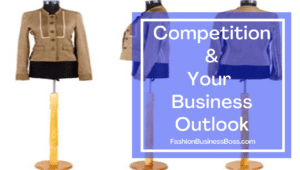Fashion is forward-thinking. Designers and runway models can influence more than the styles of what people are wearing. They can change the world by the fabrics chosen, where garments are made, and who makes the garments. Their voices can help change the world.
Tips on how to design your own clothing line include developing a brand and within the concept of your brand, you need to consider your mission statement, your brand name with a logo, and what makes your brand different from other clothing lines.
There are many steps to creating and running a business. Your mission statement and vision will frame many of your next actions. Continue reading for tips on designing your own clothing line.
Mission Statement and Vision Statement
Designing your own clothing line can feel exciting and overwhelming. There are many components to starting your clothing line. These steps do not always flow in a straight line. Nor do you complete one action item and not have to revisit it. Often you will complete part of a task then move to a snippet of another and loop back. While this may sound chaotic, it is necessary to ensure you create the clothing line that you envision.
Framing your concepts and ideas into a mission statement and a vision statement are key parts of the process. Starting a clothing line is a challenging business. For you to be successful, it is important for you to know what the purpose of your clothing line will be. Both statements should be used to frame your decisions. Your mission and vision statements should be included in your business model and plan. Each should be reviewed annually and revised as needed.
For a new clothing line, your vision statement will explore how you imagine your clothing line will be five to ten years from now. Think through the 5Ws and 1H as you craft your declaration. For example –

- Who do you want your clothing line to be for?
- What will your company design?
- When will you feel your clothing line has been successful?
- Where will you locate your business?
- Why are you designing a line of clothing?
- How will your clothing line operate?
Answer these questions or similar ones with a view to the future. The answers should be used to craft your vision statement.
Your mission statement needs to be filled with action steps that you will take over the next five or so years to meet your own expectations. You can use the same list of questions to begin your mission statement.
Both statements will serve as motivating reminders for you and your employees. Well-written statements will provide guidance, focus, and inspiration on your journey to success. They will articulate what your clothing line and you stand for and stand against.
The Most Famous Clothing Brands: Top Five
Brand Identity
Using your mission statement as your guiding principle, think through your brand identity. What makes the clothing that you will be designing unique? Answering this question should include details about why a customer will select your clothing line over another designer’s. There are a few different approaches to consider when seeking to set yourself apart from others.
Use these questions as a starting point to develop your brand. As you answer these questions, it will cause you to think of other questions. That process will begin narrowing in your brand and what makes it special.
- Excellence in the construction of the garments
- Quality of the materials
- Ethics of material sourcing
- Recycled materials used in production of the clothing
- A means to recycle clothing purchased from your line
- Pricing considerations
- Purpose of the clothing
- Fit of the clothing in your line
- Convenience of laundering your clothing
Using the answers to the branding questions will assist you in envisioning your audience. Think through who would purchase your line of clothing. Once you have a target market, take your list of questions about branding, and ask them again. When you ask them this time, keep your target audience in mind.

Consider finding people in your focused audience. Create a survey for them. Ask questions about what they seek in clothing lines. Narrow your questions to the type of clothing you want to design. This will help you get a more complete picture of your buyers. As you continue to design your clothing, keep in mind your audience and their needs and wants.
A working mother of three young children will make different decisions on clothing than a retired woman of sixty-five. Learn about the pricing, convenience, comfort, etc. that each group would be seeking. Create a profile of your customers.
- Explore the demographics of your customers.
- Age range, occupation (can drive clothing needs), discretionary income, family status (can influence material of clothing) as starters
- Physical location of customers
- City or country lifestyle, variations in the seasons, nearness to shopping
- Lifestyle
- Interests, hobbies, values
Pull all of these details together to create your target market. Creating these profiles will help you understand what your customer is looking for each time they shop. You want your customer base to know your brand, enjoy your brand, and return to purchase more.
How to Make Money from Your Clothing Line
Competition and Your Business Outlook
Now, you have a vision statement, a mission statement, an idea of your brand identity, and a profile of your customers. Understanding your competitors is another component that needs to be explored as part of designing your own clothing line.
An examination of your competitors will provide information on types of clothing lines that are currently available to customers. You can also gather ideas about what competitors are doing well. Additionally, data about what is not available can be gleaned from your study of other clothing lines.
Your research into other companies can take many approaches. Use the questions that you delved into as part of creating your vision and mission statements along with your brand identity. With your questions in hand, answer them as you think your competitor would. These responses should assist you in learning who your true competitors are. Not everyone in the fashion world will be competing with you.

You will also discover the details of how your competitors approach their brand identity. Detail for each actual competitor the lines of clothing that they have included in their business. Are there any items you should consider adding? Are there items that you should consider removing?
Take a look into how your competitors reach their customers. You will be seeking to attract some of the same people. Are they mainly online? Are they in a physical location? What services do they offer? Do they send emails with news of the fashion world? Explore their website. What is easy to navigate? What parts of the website do you not like?
While on the internet, check the customer feedback that your competitors receive. Positive comments as well as negative comments can provide you invaluable information.
Examine their price structure and sales. Do these sell subscriptions to their line? Do they offer a frequent buyers’ club? In the frequent buyers’ club, does the buyer earn free merchandise or a percentage off their next order?
This research is an integral component of creating the foundation of your clothing line. From this treasure trove of data, you can develop tactics that will set you apart from your competitors. This exploration should be done on a regular basis. It helps you stay current with trends and other businesses.
Related Questions
What is a business plan?
A business plan is an essential step that details the industry in which you will operate your business and the need for your specific business. It compels someone starting a business to take a concept from an idea to one with steps to attain the business objectives.
What is a business model?
A business model details the steps that your company will complete to start a business and make a profit. Usually, a business model will contain specifics about how you will sell your services and/or product, your company’s target market, estimated expenses, and steps to profitability.
What is funding?
Funding is the money entrepreneurs need to start their business. Monies included in funding will also include expenses after the start-up period while a business is still establishing itself. Funding is needed to pay rent, purchase inventory, hire employees, and process legal paperwork.
What does it mean to obtain funding?
Obtaining funding includes the steps of finding sources of money that will invest in your venture. Money can come from many sources. The entrepreneur(s), family and friends fund some businesses, and/or bank loans. Remember funding needs to be included in your financial statements.
To learn more about how to start your own fashion clothing line check out my startup documents here
Please note: This blog post is for educational purposes only and does not constitute legal advice. Please consult a legal expert to address your specific needs.

Meet Shawn Chun: Entrepreneur and Fashion Business Fan.
I’m a happy individual who happens to be an entrepreneur. I have owned several types of businesses in my life from a coffee shop to an import and export business to an online review business plus a few more and now I create online resources for those interested in starting new ventures. It’s demanding work but I love it. I do it for those passionate about their business and their goals. That’s why when I meet a designer or boutique owner at a craft fair, farmers market, retail location or anywhere else I see myself. I know how hard the struggle is to retain clients, find good employees and keep the business growing all while trying to stay competitive.
That’s why I created Fashion Business Boss: I want to help fashion business owners like you build a thriving business that brings you endless joy and supports your ideal lifestyle.

